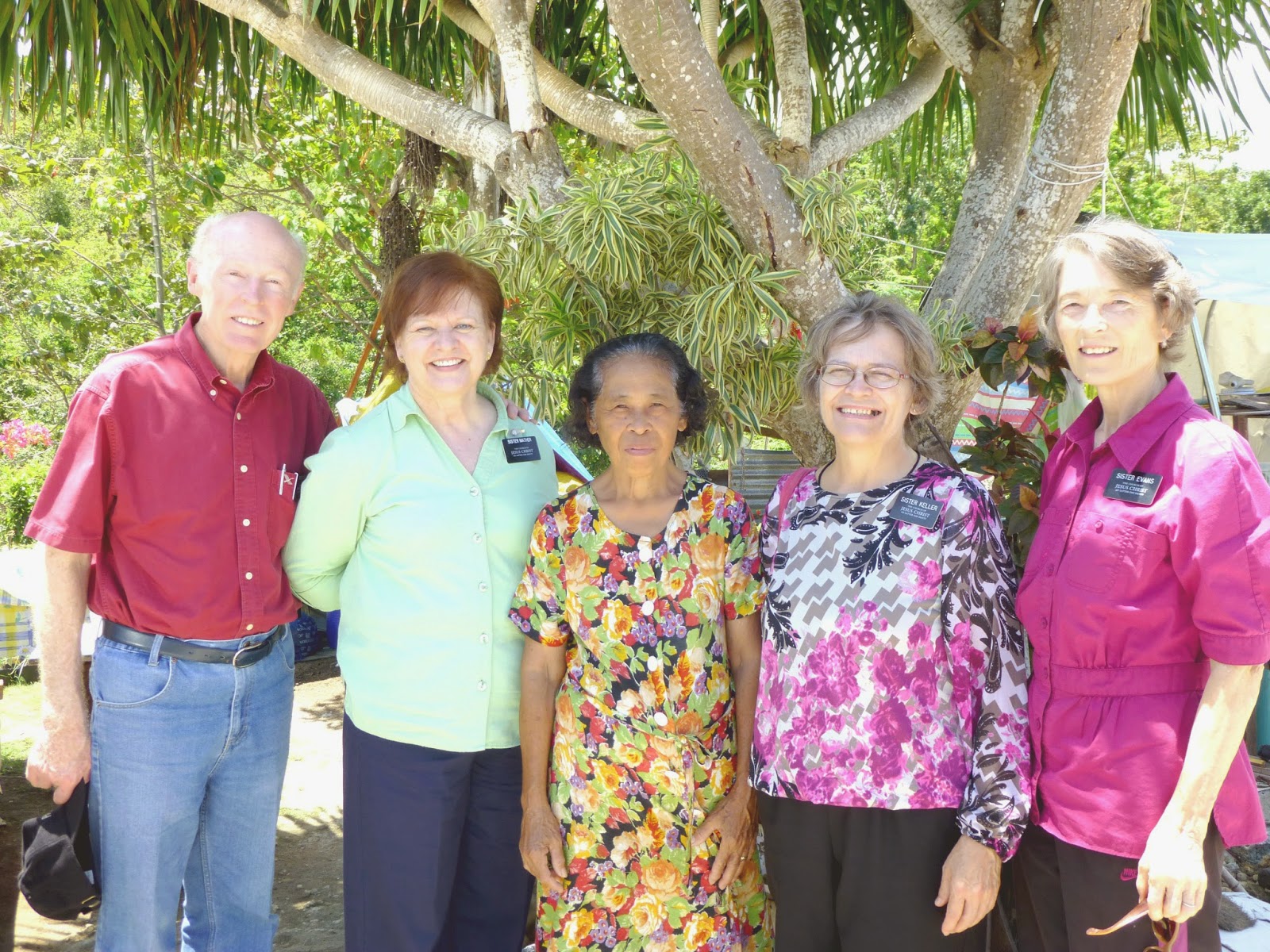Back by “popular demand” is another food blog. The fascinating foods of the Philippines
never cease to amaze and delight us – especially the many exotic fruits.
However there are 2 foods that have a major reputation as
being cultural icons – Durian and Balut.
Finally I have tasted Durian! Durian is a fruit and, honestly, it is almost
indescribable. It has a very tough, very "poke-y" “shell” that is best attacked with a
machete or equivalent (which unfortunately we did not have.)
The closest I can
come to describing the texture of the fruit itself is that of soft custard. The flavor is very pleasant and fruity, but
nothing like any fruit I have ever tasted before. The reason for its fame (or infamy, depending
on your point of view) is its very
pungent aroma (that lingers) and had been described to us as “worse than stinky
socks”. On
the contrary, I found it not particularly unpleasant, oddly fruity – but the intensity of the odor is pretty
intimidating.
I have also had the opportunity to try Balut. It is a fertilized duck egg that is left to
develop almost to the point of hatching.
I am told that 16-18 day old balut is probably best for beginners as the
beak and feathers are just beginning to be noticeable. Personally I found balut
quite tasty – and I didn’t eat it in the dark either (one suggestion for making
it more edible.) The problem with finding balut is that it is mostly sold after dark in areas we do not go into – actually
that is almost anyplace after dark. ( ^ ;
We ran across a vendor who must have just been beginning his route as it
wasn’t yet dark and he was right on our street!
A cultural delicacy of which Cebu is very proud is its lechon – roast pig, preferably whole— it is great! It boasts a unique blend of spices and is very tender. I thought it notable that when the whole pig was being served for a ward Christmas party that someone asked to have the head (as it apparently is too slow to carve properly for a gathering). The cook thought briefly then nodded, but promptly opened the mouth and cut off the tongue and put it aside for himself!
Here is a pig on the “sidewalk butcher shop” (literally a metal table on the sidewalk) on his way to becoming lechon.
Very little food is wasted here, we frequently see pork
belly, pig feet, and tripe (stomach).
Another local delicacy is chicken feet – cooked crunchy – I
confess, not my personal favorite.
Both a favorite snack and cooking food is dried seafood – especially fish of every variety! Notice that most of one wall of this large supermarket is taken up by dried seafood!
The fresh seafood is also wonderfully varied. (I wish I enjoyed it more, but one doesn’t
develop much of an appetite for seafood in Montana – no sea!) I am actually becoming quite fond of squid,
especially batter-dipped and deep fried – yum! No, we really don’t have
facilities for cooking it at home (or the desire?) There is lots of fresh squid, octopus, and
tarot (cuttlefish—another cousin.)

There are always lots of shellfish, crabs, and fresh fish of
all sizes, shapes, and, yes, colors.
This was our favorite little produce stand where we could
buy fresh veges very cheap every weekend.
Unfortunately it was “condemned” due to safety concerns related to the
new building supposedly being constructed on the lot behind it.
This small fruit stand is co-owned by a young man named Rain
who personally delivers fruit to us at the office once a week. He goes directly to the “wet market” before
daylight to get the best and freshest fruit as it arrives. I have never been able to resist a pun so I
love that “Rain brings fruit”.
(including
red bananas) and deep fried bananas.
I also love lychee and rambutan, – The rambutans are little red “hairy”
fruits about 2 inches (5 cm.) long.
Lychee are small and red similar to rambutan, but not hairy – not yet
back in season either, unfortunately.
the mangoes we get average about four and a half inches long (11 cm.) and very heavy and juicy.
the mangoes we get average about four and a half inches long (11 cm.) and very heavy and juicy.
Dragon fruit is as fun as its name and quite tasty.
Kaimito is a beautiful purple – especially inside.—and very yummy.
Chico is a very fun fruit not unlike a roundish apple in
appearance, but more like a peach in texture with a very tasty, unique flavor.
Marang
is “furry” on the outside and must be hung up to ripen or its own weight will
cause the fruit to bruise! It has a
pungent odor until peeled and the fruit is very sweet.

.JPG)
Mangosteens wear funny little caps and have a sweet white segmented fruit inside.

.JPG)
























.JPG)
















































